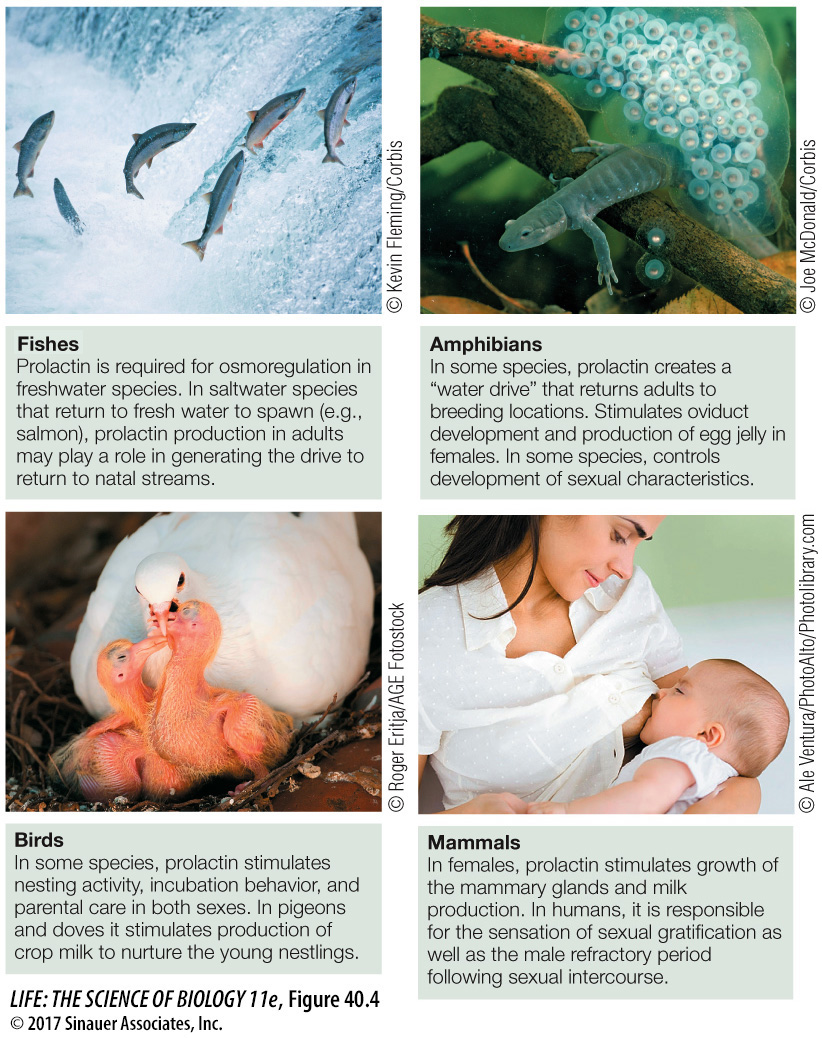Hormone structure is conserved through evolution, but functions change
Intercellular chemical signaling was critical for the evolution of multicellularity, so hormones have a long evolutionary history. The least complex of the multicellular animals—the sponges—do not have nervous systems, but they do have intercellular chemical communication. Studying the evolution of hormonal signaling reveals an interesting generalization: the signal molecules themselves are highly conserved. We find the same chemical compounds over broad groups of organisms, although their functions may differ. As organisms have evolved to occupy different environments and have different lifestyles, the same hormone–receptor systems have diversified to serve different functions. A good example of this evolutionary diversification is the hormone prolactin, described in Figure 40.4. The name prolactin reflects the role this hormone plays in mammals to stimulate the growth of mammary glands and the production of milk. Mammary glands are unique to mammals, but we find prolactin in all vertebrate groups—and in all cases it is involved in some way in reproduction.

Figure 40.4 Prolactin’s Structure Is Conserved, but Its Functions Have Evolved The hormone prolactin is found in all vertebrate groups and has a long evolutionary history. Its probable function in early vertebrates was in regulating the body’s salt and water balance (osmoregulation). It maintains this function in some species, and has evolved in others to control a number of physiological processes, most of which are associated with reproduction.
The list of hormones known to exist is long and growing longer (as shown by the recent discovery of irisin). To make the subject manageable, we will focus primarily on the endocrine system of mammals. Figure 40.5 presents the human endocrine glands and most of the hormones that are discussed in this and subsequent chapters.

Figure 40.5 The Endocrine System of Humans Cells that produce and secrete hormones may be organized into discrete endocrine glands, or they may be embedded in the tissues of other organs, such as the digestive tract or kidneys. The hypothalamus is part of the brain, but it includes cells that secrete neurohormones into the extracellular fluid.
Activity 40.1 The Human Endocrine Glands

